The refurbishment of a circa 1957 10" F/7 Treckerscope from Coast Instruments
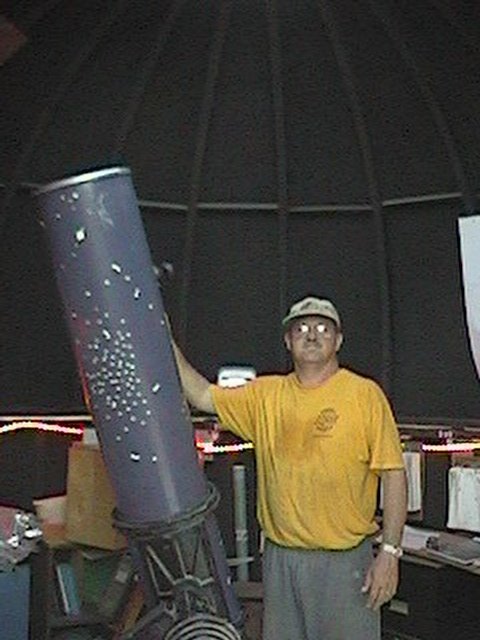 |
Here's a shot of me with the scope just after installation in the dome. Nice color, and the stars glow in the dark. (Who's idea was that?) |
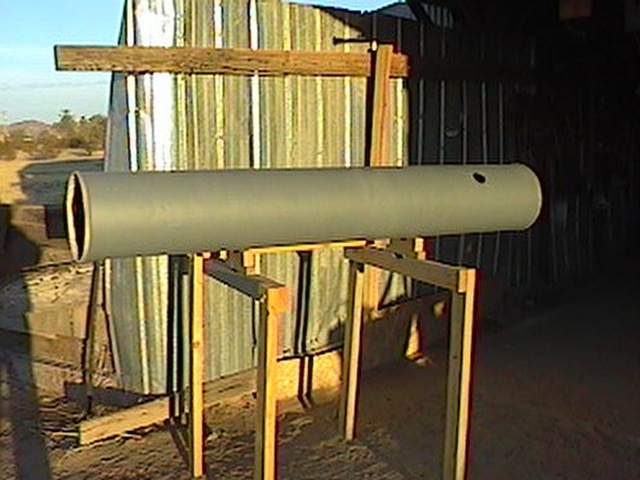
|
The tube with 3 primer coats applied, after stripping and sanding. 06/01/03 |
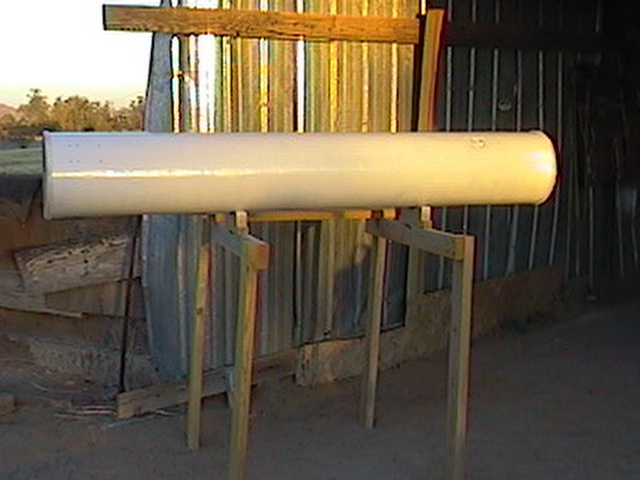
|
The tube with one coat high performance enamel paint. 06/01/04 |
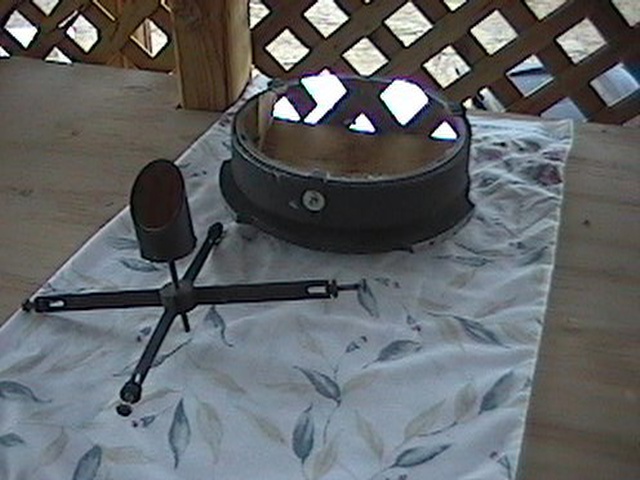
|
Main and secondary mirror cells. Secondary cell has no easy collimation adjustments, so this may be a future modification. |
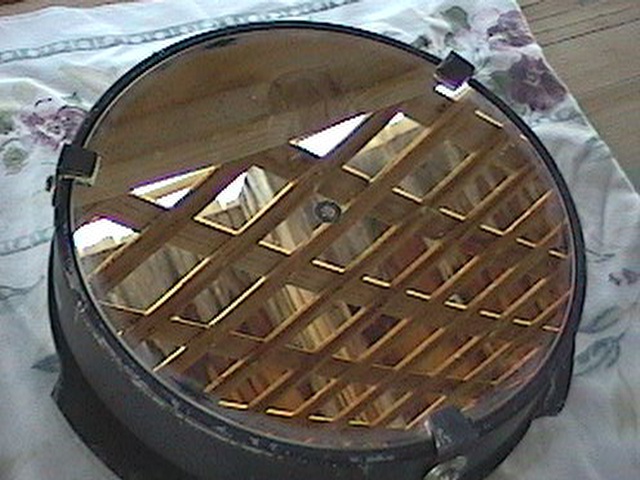
|
Surface of the main mirror. Appears pretty good, considering its age, but re-aluminization is in its future. |
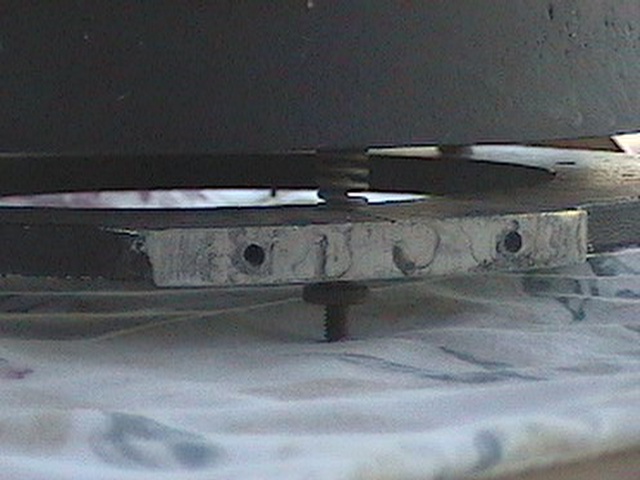
|
Close-up of main collimation screw and mounting holes. Simple. |
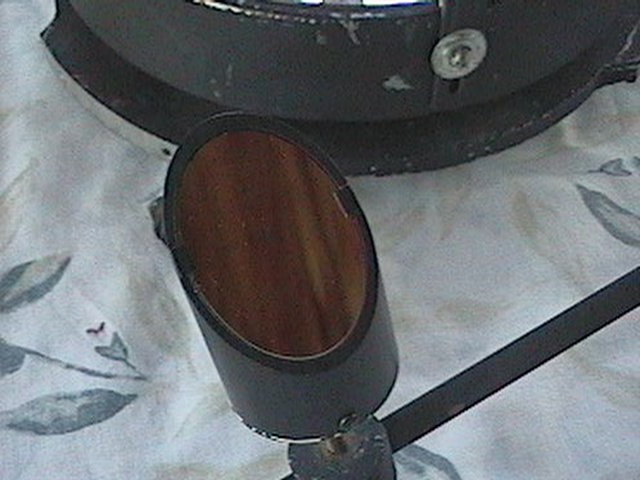
|
Surface of secondary looks really good! |
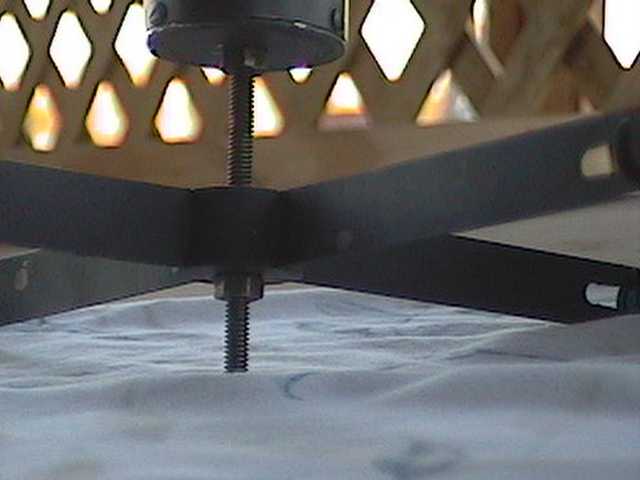
|
Alternate view of secondary and spider showing lack of adjustment for collimation. |
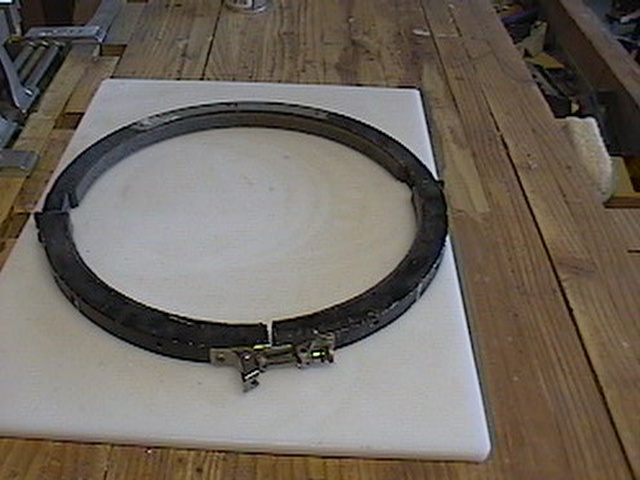
|
One of the old tube rotation rings. This one mounts on the cradle and is designed to stay in place and place a small amount of friction on the tube,
limiting movement, while allowing the tube to roatate in a controlled way. Unfortunately, the amount of friction is too high due to the surface area of the
felt used and the amount of tension on the screw, visible closest to you. |
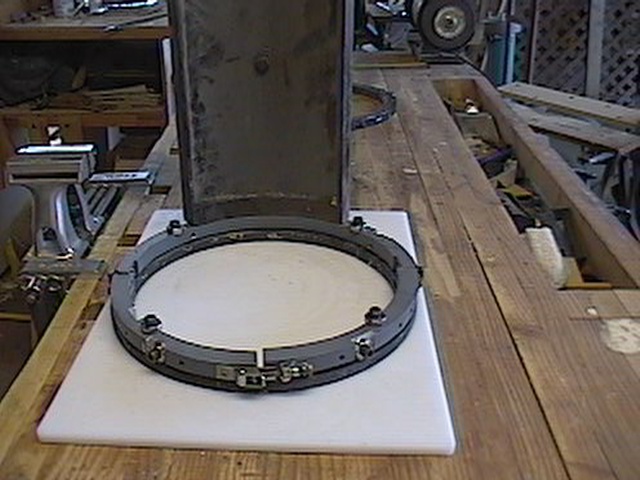
|
The new mounting ring. Note the bearings set horizontally, (axial), and the bearings mounted vertically, (radial). Below the new, primed ring
is the static ring that attaches firmly to the tube, and upon which the radial bearings ride. This ring acts as a race for the radial bearings and prevents
the tube sliding out of the cradle. The race for the axial bearings will consist of two, 2" wide strips of 6051 aircraft aluminum mounted to the tube itself.
(The installation of these races is planned for this weekend, 07/01/13.) Also seen here is how the roller ring attaches to the cradle, and the static ring will
fit in relation. |
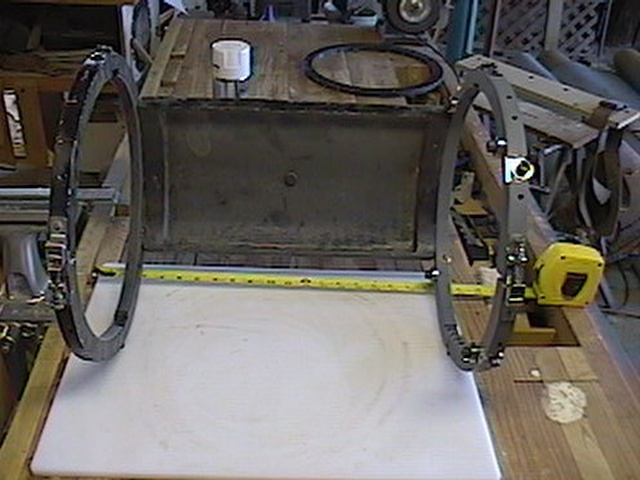
|
An image showing the two roller rings attached to the cradle for reference. The eyepiece of the scope will be on the left while the mirror will obviously
be on the right. Tape measure for scale. |
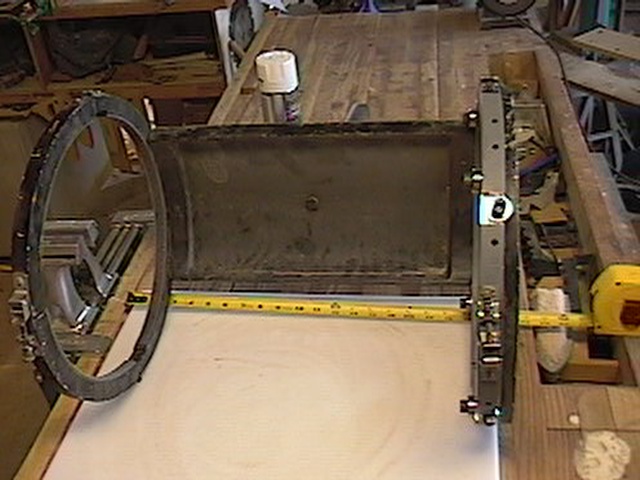
|
Same shot, only with the static ring placed up against the new roller ring. |
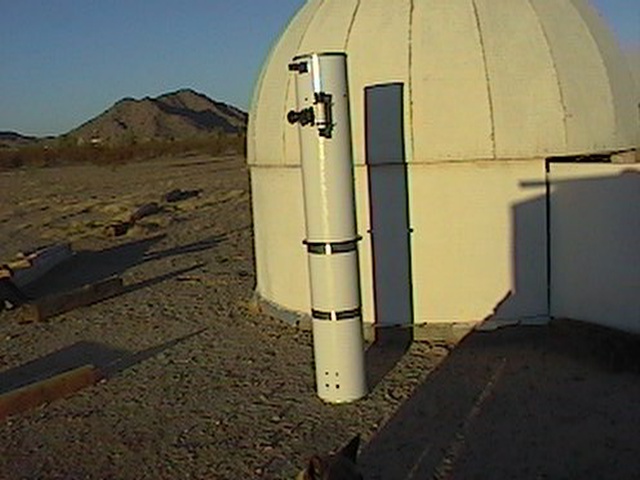
|
The "New" tube, with all the hardware mounted. You can clearly see the screws at the bottom for the mirror cell, the aluminum bearing races, the retaining ring,
focuser, finder scope and Rigel finder. |
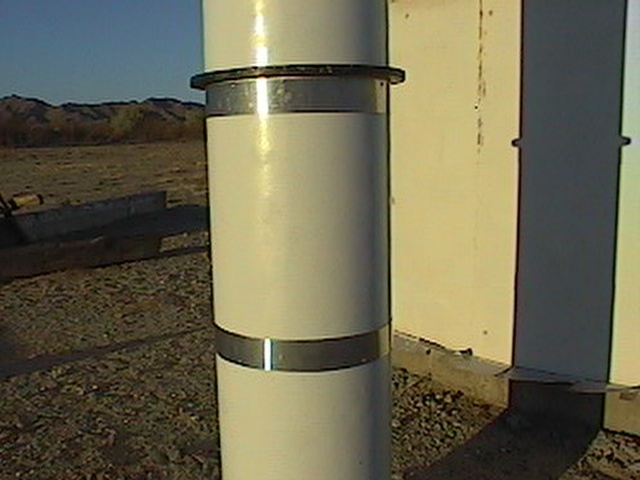
|
Closeup of the 6051 aircraft aluminum bearing races. I riveted them to the tube with another aluminum bushing on the inside to reduce stress on the fiberglass tube.
The upper one was quite a challenge, since my arms don't happen to be 3' long. |
Here's some background on this scope and how it came to me.
Two or three years ago, maybe as many as five, my brother-in-law attended the Grand Canyon Star Party for a few days with his old, new scope. He set up next
to me in hopes that I could help him learn how it worked and such. Unfortunately, he would leave relatively early in the evening, and I stayed fairly busy
with the public until after he was gone. I managed to sneak a peak or two through it, but not enough to appreciate it. The huge, old GEM mount was very
different in operation than my C8, so I was basically as lost as he. We don't talk all that much, and he'd mention it in passing from time to time, but it
never really sank in.
Well, this past June, as we were leaving the Grand Canyon Star Party, my cell phone rings. It's my sister, asking if I'd like the aforementioned telescope.
I said I didn't have any money, but she said it would be no problem, and that it would be free to a "good home", such as my Stone Haven Observatory. We made
some arrangements, and my brother-in-law delivered the scope and basically a ton of other astro-gear in August, 2006. I set up the scope in the 12' dome and
it basically sat. From time to time I'd go outside and collimate it, or check out Jupiter or something, but mostly it just sat there looking wistful.
It wasn't until I took it out to the Schwaar/Sentinel Star-Gaze in November that I found out what I had. I spent two full nights observing mostly stuff
I'd seen before and had memorized, since the drive didn't work and setting circles were useless. Well past 3 AM both nights, I never noticed it was 25º F outside.
My neighbor was using a 20" Newt and we'd
swap views on some objects. The one that struck me the most I think was M82. The only difference in the two scopes I could see was the brightness-contrast, detail
and clarity were all the same, his was only slightly brighter. It was great!
I decided right then I'd have to refurbish the scope, if for no other reason than to make it easier to use. The time I spent wrestling it into a position
from which I could observe was wasted and took away from magnificent views! Can't have that, surely.
So, in daylight, I asked a few of the more experienced folks around what they thought of the scope and its possible origins. One spotted the Coast Instruments,
another the fiberglass tube and all mentioned the massive mount. Estimates from "Old" to "Very Old" were given, but noone could agree on just how old. The old paint
disguised a true classic. The word "classic" was bandied about quite a lot. I'd mentioned my plans to use the optics to build other mounts, namely a split-ring with
a truss tube OTA as a "test of concept" for a 16" F/5 I've designed. Some thought this a bad idea, but hey, it's my scope now and making another mount will in no way
diminish the old mount or OTA, right? Anyway, I'll still have to have the OTA rotate if it turns into a split-ring, so it's all good.
Well, that about sums up the story of the scope, so far. It'll have a great home, and if I can figure out the drive repair/replacement, I'll be all set.
Thanks for your time

Page URL: http://www.stargazing.net/Astroman/trecker.html
Copyright 2007, Steve Dodder
Webmaster : Steve Dodder
Revised:
1/25/07

